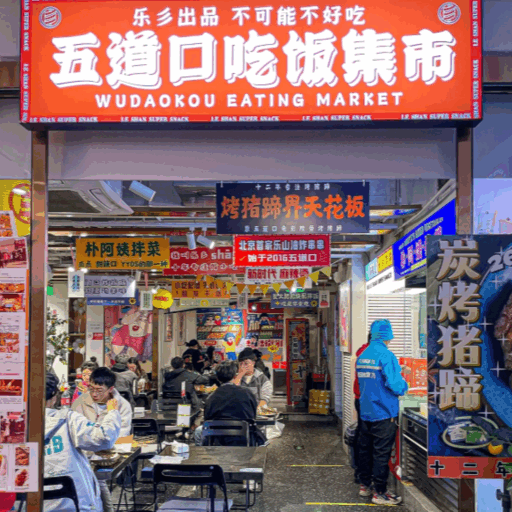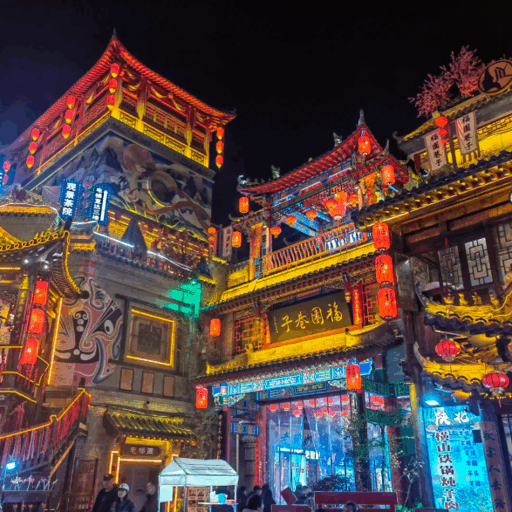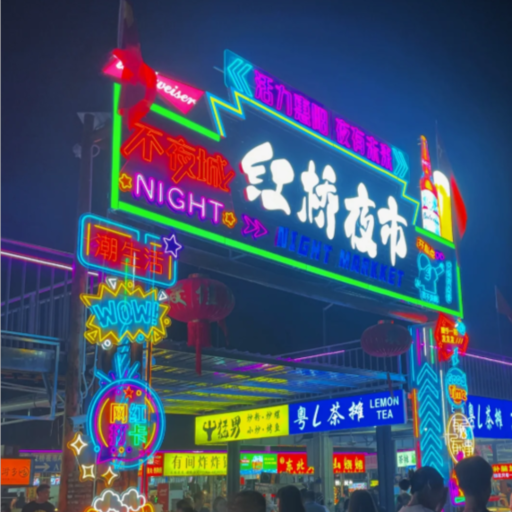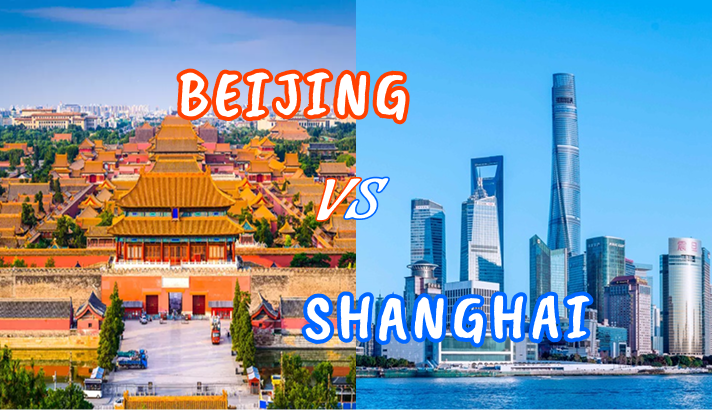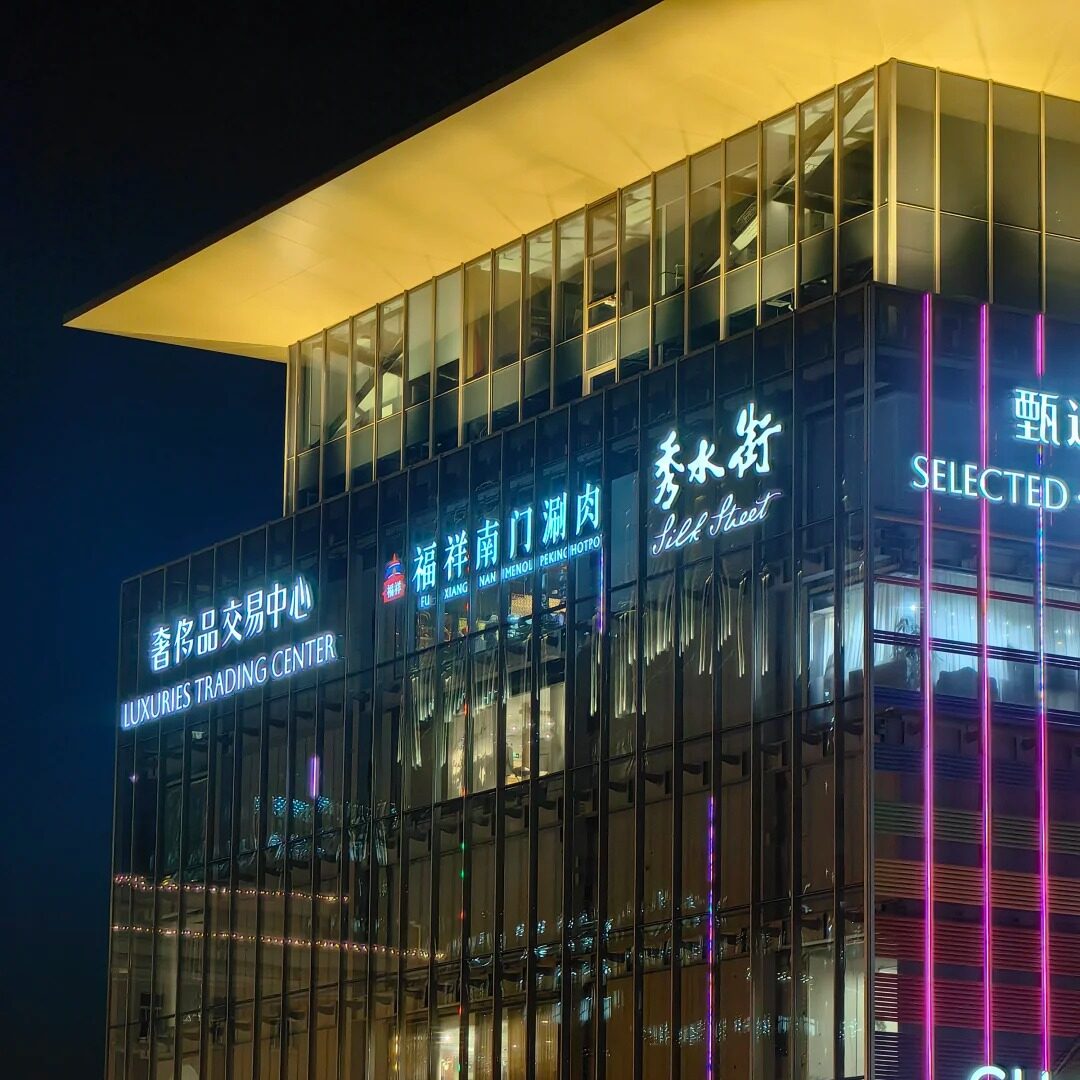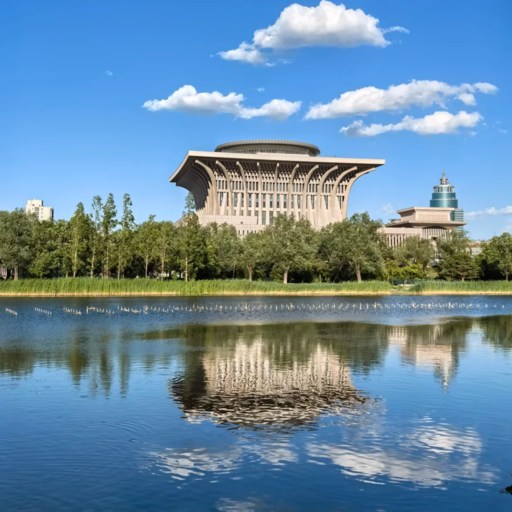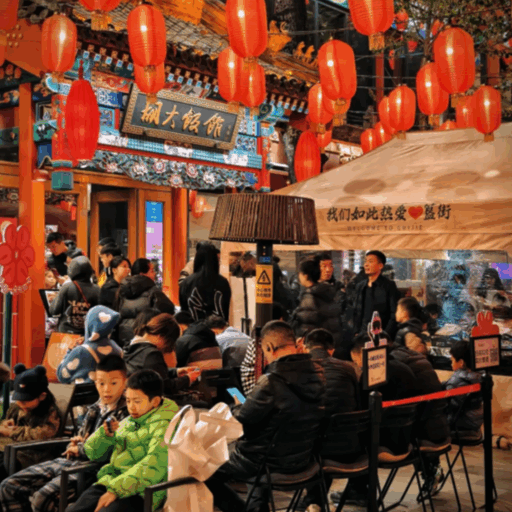
Night Market in Beijing
Many years ago, the Beijing hutongs were too narrow to hear each other and told their own stories during the evenings. The red lanterns lit grey brick walls and the aroma of roasted lamb mixed with the laughter of the people sharing the late evening snacks. As time passed these meetings became more than meals. The city presents its pulse in the night market of Beijing today. The neon lights are flashing above the burning skewers, strangers become friends during crayfish, and the combination of smoking air, noise, and the taste form the rhythm of the capital. It would be like going to Beijing in broad daylight only, half the story untold.
What Makes Night Market in Beijing Unique?
Once the lights come out on the grey walls of hutongs, the night markets of Beijing are bustling. The atmosphere blends the smell of roasting lamb, chopsticking clangs, and haggling. Food, souvenirs and social interactions are merged in this case, the skewers along with calligraphy brushes, the jade trinkets and counterfeit sneakers. It is hectic, at times disorganized but weirdly appealing.
I still recall how students at Guijie would encourage me to eat spicy crayfish; it was hilarious when I was not able to strip one crayfish. These little things make snacks into an anecdote. Visitors to TripAdvisor tend to mention that the Beijing street food market may be disorienting, but it is also disarmingly real-felt, putting you not only full, but also in touch with the way the city vibrates at its nighttime.
Top 4 Famous Night Markets in Beijing
Wangfujing Night Market
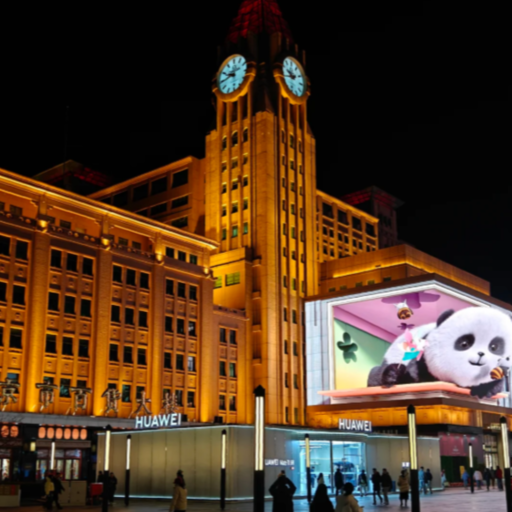
Wangfujing Night Scene
When most visitors talk, Wangfujing immediately evokes neon lights, sizzling skewers, and countless snacks filling one street. It was the most popular night market before closure, often considered a must-visit destination for first-time tourists in Beijing. Residents still recall the carnival atmosphere where candied hawthorn sparkled under lamps, while fried scorpions or seahorses attracted endless tourist photographs. If you want to dive deeper into the culture beyond Wangfujing and explore other must-see highlights of the city, check out this guide to the top places of interest in Beijing.
Although authorities closed the market years ago due to redevelopment and safety issues, its legacy still lives in blogs and social media. Visitors remember the mixture of sweet, spicy, and smoky aromas that defined their Beijing nights. Reviews often mentioned heavy crowds yet highlighted the unique experience, which many compared to walking on the Great Wall.
Today, authorities have transformed the area into regulated food streets, but tourists still explore nearby alleys to capture the old night market’s magic.
Quick List: Wangfujing Night Market
📍 Location: Central Dongcheng District, Wangfujing Street
🕒 Opening Hours (historical): Evening until late night
💰 Average Spend: ¥60–100 per person
🚇 How to Get There: Take Metro Line 1 to Wangfujing Station (Exit B)
💡 Tips: The original market is closed; try nearby Wangfujing Snack Street for a similar food adventure.
Guijie (Ghost Street) Night Market
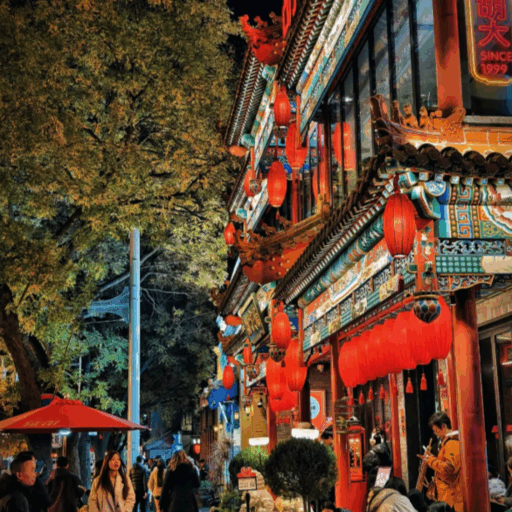
Guijie (Ghost Street) Night Market
There are no better places to eat in Beijing once you ask a Beijinger where to eat at 2:00 AM, he/she is more likely to refer you to guijie night market Beijing, also known as Ghost Street. This is unlike the short-term food stalls that come with other night markets, which is a permanent eating street that is approximately 1.5 kilometers long and has over 150 restaurants. At night, with the neon red lanterns illuminated, the whole street shines with a party, almost surreal atmosphere.
Here, food is the true star. The avenue is associated with Sichuan food, particularly foods with a lot of spiciness and flavor. Tourists are praising about hotpots, hot skewers and the favorite spicy ray fishes. To most local residents, the summer night ritual is to invite friends and sit around a spicy broth of boiling chili peppers and freezing beers in Ghost Street. The vitality of the street can be frequently mentioned on TripAdvisor: one of the travelers made an observation that it never sleeps and one will never sleep when visiting it in case one comes hungry.
Nevertheless, in contrast to the formerly tourist-oriented Beijing street food market symbolized by Donghuamen, Guijie is realistic and vibrant, attracting not only students but also families and night owls. You want a fast skewer or a sit-down meal, it is the spirit of the Beijing post-nighttime eating scene.
Quick List: Guijie Night Market
📍 Location: Dongzhimen Inner Street, Dongcheng District
🕒 Opening Hours: Most restaurants open 24 hours; busiest after 9:00 PM
💰 Average Spend: ¥100–180 per person
🚇 How to Get There: Metro Line 2 to Dongzhimen Station
💡 Tips: Best enjoyed with a group; try the spicy crayfish for the full experience.
Panjiayuan Night Market
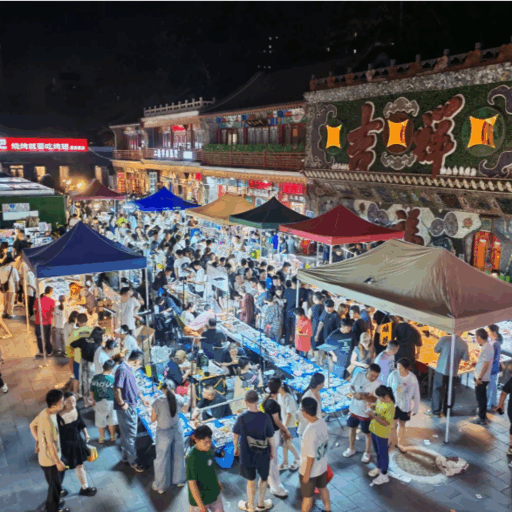
Panjiayuan Night Market
Although most individuals associate food with the idea of a night market in Beijing, Panjiayuan shifts focus to art, antiques, and curiosities. Locals call it the Dirt Market, where bargain hunters, collectors, and the curious explore a truly eclectic assortment. Visitors find Qing-era furniture copies, calligraphy scrolls, Tibetan jewelry, vintage coins, and even Cultural Revolution souvenirs scattered among the stalls.
Unlike the hot grills of other markets, the sounds here come from negotiations in many languages and scrolls unrolling across tables. Sellers eagerly tell fables about their goods, half-history and half-sales pitch, which often entertains as much as it informs. During weekends, Panjiayuan attracts tourists and Beijingers alike, some seeking bargains, others simply enjoying the crowd and the spectacle of people-watching.
The subject of TripAdvisor reviews frequently speaks of the excitement of not knowing what you are going to do. A visitor explained that they stumbled on a carved chess set, which they had bought to them as the best souvenir of Beijing. Where an antique is not original, the fun lies in the search. To the cultural enthusiast, it is more of a schooling than a shopping session.
Quick List: Panjiayuan Night Market
📍 Location: Panjiayuan Road, Chaoyang District
🕒 Opening Hours: Weekends from early morning to late evening
💰 Average Spend: ¥50–300 depending on bargaining skills
🚇 How to Get There: Metro Line 10 to Panjiayuan Station
💡 Tips: Haggle politely; don’t expect everything to be genuine, but look for unique keepsakes.
Sanlitun & Chaoyang Bar Street
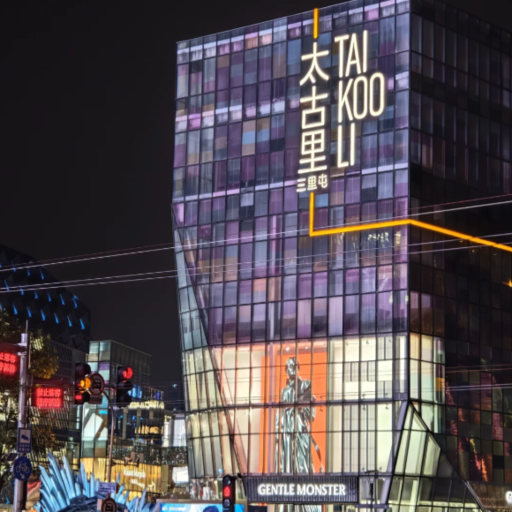
Sanlitun & Chaoyang Bar Street
To the young and hip side of the after-dark Beijing, go to Sanlitun and Chaoyang Bar Street. Although it is not a conventional night market within Beijing, this is still an area that gives an assortment of fashion, cuisine, and nightlife that makes it just as appealing. The area of Sanlitun is full of foreign brands, customary shops, and street sellers offering the latest Beijing night market clothes, including fake sneakers and handmade jewelry.
With the onset of evening, the mood is different. There is music spilling over roof bars, neon lights glowing above craft beer pubs, food stands pushing between fancy clubs. It is a blend of the old and the new: you may have a snack lamb skewers grilled right outside one of the upscale malls. By the year 2025, the area is already poised to be a place not only to the expats, but also to the local trendsetters, and the phrase Beijing night market 2025 tends to remind the ever-changing night life environment in Sanlitun.
The diversity here is very often praised by the travelers on TripAdvisor. One of the reviewers said that in a block it is possible to have sushi, kebabs, and cocktails and dance till the sunrise. Sanlitun is not like other more conventional markets that are food-oriented, but is energy, fashion, and cross-cultural exchange. It is where the cosmopolitan portion of the city of Beijing breathes life to it.
Quick List: Sanlitun & Chaoyang Bar Street
📍 Location: Sanlitun and Chaoyang District, east of Worker’s Stadium
🕒 Opening Hours: Shops until 10:00 PM; bars and clubs until late (often 4:00 AM)
💰 Average Spend: ¥150–400 depending on nightlife choices
🚇 How to Get There: Metro Line 10 to Tuanjiehu Station, or Line 2 to Dongsishitiao Station
💡 Tips: Dress casual-chic; evenings get crowded, so arrive early for rooftop spots.
Other Lesser-Known Night Markets Worth Exploring
- Wudaokou Night Market
- Nanluoguxiang Night Market
- Hongqiao Market Night Scene
But at the night market in Beijing, many of the smaller corners of the country receive a show. They’re also frequently less touristy, cozier and sometimes even more fulfilling if you’re hungry for what’s real.
Nanluoguxiang Night Market
Best known for its historic hutong lanes and indie vibe, Nanluoguxiang assumes an evening life of boutique stalls and dessert shops. You’ll see novelty trinkets, handcrafted goods and sweet treats like yogurt cups and rose-flavored cakes. This stretch draws the youthful set who not only come to shop, but also soak up the hutong charm under lantern lights.
Hongqiao Market Night Scene
For pearls and souvenirs: Hongqiao no exceptions. Though it is actually a day-time market, the upper floors stay active at least until late evening, and provide pearls, silks and gifts at prices negotiable. It has less to do with food and more about the excitement of haggling — and don’t be surprised if a negotiation for a deal takes longer than anticipated. For many of the shoppers, the banter with sellers is half the fun.
Student Night Markets (e.g., Wudaokou)
For something that is really local, try studenty areas, like Wudaokou. Stalls here sell cheap snacks, bubble tea and fast bites for when you need a study break. The vibe is casual, youthful and friendly; groups of students chat over orders of skewers and fried noodles. Prices are among the lowest in town, and it’s popular with backpackers and budget travelers.
The more you dig into these Beijing night market hidden gems, the more you get a sense of how the city’s younger generation and average citizens of the city enjoy their nights. They don’t have the neon glitz of Wangfujing, but they provide a warmth and authenticity that many visitors love.
Practical Tips for Visiting a Night Market in Beijing
Best Time to Go (7 pm – 11 pm)
You’ll find locals beginning to arrive around 7 p.m., when the stalls are all in place and the grills are already smoking. If you arrive earlier, half the vendors may still be unpacking. The optimal time to head to the night market in Beijing is 8-10 pm, you need it busy enough to enjoy the buzz, but not too late when food starts running out. Others, such as those at Ghost Street, continue to serve long after midnight, but the smaller hutongs are typically closed by 11 p.m.
Payment & Language Tips
Most vendors take mobile payments like WeChat Pay or Alipay, but if you’re visiting with a foreign card or cash (in small bills) it’ll work at most places. ATMs are easily accessible in Wangfujing and Sanlitun but not necessarily within hutong alleys. Few speak or understand English, so a few helpful Chinese expressions — “duō shǎo qián?” (多少钱, how much?) —go a long way. If you want to learn more about polite phrases and proper etiquette when interacting with locals in China, you can check out this guide on Chinese etiquette. And there was Google Translate’s offline mode, which comes in handy when it’s time to haggle over the price of trinkets or specialty snacks, according to some travelers on night market Beijing Reddit threads.
Avoiding Scams & Spotting Fakes
Illuminated night markets are enjoyable, but not every “antique” is as advertised. At Panjiayuan, for example, true collectors estimate that 90% of the “old coins” are fake. One trick, Carlson says: ask for a receipt, or examine whether the item feels too light or too shiny compared to genuine materials. If you’re buying clothes and shoes, look at stitching and labels — authentic products should have few (if any) misspelled words in English on the label or be in inconsistent sizes. It doesn’t mean to dodge every fake, but to pay a fair price for what you get.
In the end, a little caution and an open mind will go a long way in allowing you to sample Beijing’s lively night markets sans sour surprises.
FAQ About Night Market in Beijing
Q: Is Donghuamen night market still in business?
No, the Donghuamen night market in Beijing was shut down in 2016 because of hygiene and congestion concerns. Many locals still refer to it as a memory, but if you seek the same vibe, Wangfujing Snack Street or smaller hutong food alleys are acceptable substitutes. Don’t worry, you will still find fried scorpions, candy fruit and late night snacks in other corners of the city.
Q: Where to go in Beijing at night?
In addition to the night market in Beijing, visitors can go to Houhai for lakeside drinking, Sanlitun for clubbing or the Olympic Park for light shows. If you are more into food adventures, Guijie (Ghost Street) has hotpots around the clock until dawn. Each neighborhood reflects a different sliver of the city’s nightlife, combining classic flavors with contemporary vibes.
Q: When is the best time to go to a Chinatown night market?
Many Chinatown-esque markets, even overseas, are in full swing after dark. Entire but the best time visit night market in beijing s is 8-10pm. This hour finds the vendors settled, the food fresh and the crowds that perfect blend of chaos and fun. If you get there too late, you could miss fan-favorite snacks, but if you arrive early, it seems incomplete.
Q: What should I try at a night market in Beijing?
Begin with tánghúlu (candied hawthorn), grilled lamb skewers and spicy crawfish on Ghost Street. At Panjiayuan, pick up a bubble tea as you shop for antiques. Residents recommend bypassing over-fried tourist traps and to instead follow the longest line of locals. That’s generally where the most value is hiding in a night market in Beijing.
Q: Are night markets in Beijing safe for tourists?
Generally, yes. The other night markets in Beijing are crowded but safe, and government patrols nearby ensure that most people do not get pickpocketed. The main problem is pickpockets in crowded areas like Wangfujing, so make sure to zip your bag. Food hygiene is inconsistent; pick stalls with many patrons. On Reddit, many travelers point out that while some food looks unfamiliar, sampling small amounts is one way to strike a balance between novelty and safety.
Q: Is it possible to negotiate in a night market in Beijing?
It is typical to haggle for mementos, clothing and little trinkets – not so much with food. If you are at places like Panjiayuan or Hongqiao, simply know that this things usually will cost you three times less after a minute of talking about the price. Friendship plus a counteroffer is good. Haggling is part of the entertainment at a night market in Beijing, so give it a try.
Q: Which Beijing night market is best for souvenirs?
Classic Panjiayuan is where to go for antiques and crafts. Hongqiao Market is famous for those who are looking for pearls or jade jewelry. Good for: Quirky shirts; Beijing opera masks Small hutong shops near Nanluoguxiang are best. Every Beijing night market has its own specialty, so the best one varies based on what you’re after.
Q: Are Beijing night markets family-friendly?
Yes, many are. Wangfujing’s snack street is stroller-friendly, and children gobble up candied fruit skewers. Guijie caters more to adults with spicy rather than sweet snacks and runs until the wee hours of the morning. Panjiayuan is quieter, more suitable for day browsing with kids 16 and older. In sum, night markets can be family friendly in Beijing as long as you choose the correct one.
